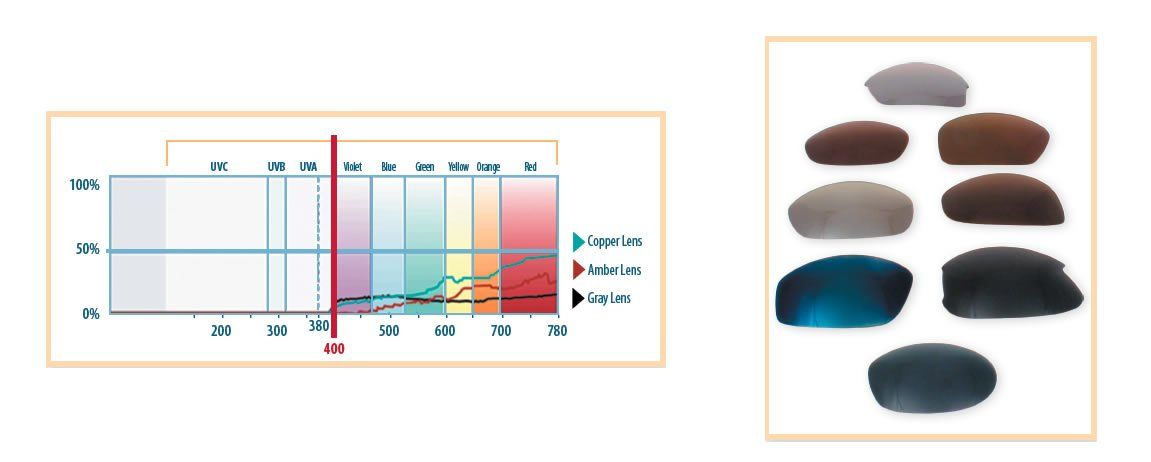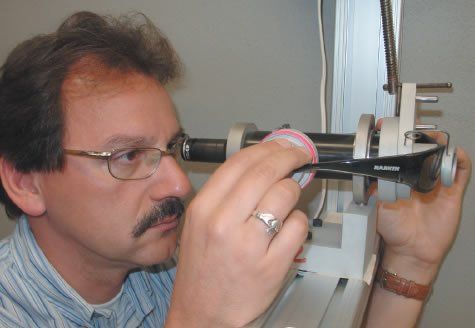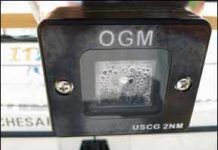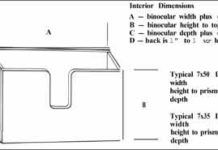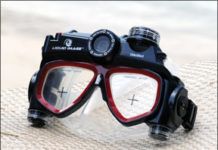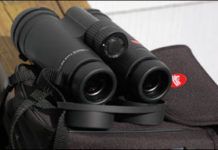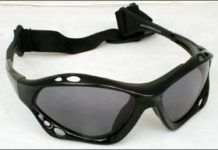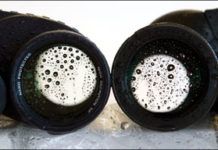Seeing the Light on Night Vision
A few weeks ago, I found myself in the desert at night and reflected upon how much the wide expanses of sand and rock in the American Southwest resemble the sea-especially after the sun has set. Away from the loom of the lights of Moab, Utah, my wife and I stood in an empty parking lot looking to the east, where the pyramid peaks of the La Sal mountains were silhouetted by the light of the full moon, still invisible below the horizon. Wed arrived to Arches National Park at night, driving through the blackness, following our headlights to the third or fourth pullout on the winding road into the park. We missed the sign identifying the pullout, so the geographical feature that the viewpoint was meant to serve remained a mystery.
Where Credit Is Due: May 2013
Two years ago, I replaced my incandescent stern light with a waterproof, sealed LED unit from OGM (www.miseagroup.com). This winter, while the boat was on the hard, I noticed that the seal had failed and drops of water fogged the lens. Although the LED continued to work, I was concerned that the moisture would reduce the visibility, or that the light would fail when I needed it most.
Design For: Box for Binoculars
One of the primary causes of ruin for many pairs of binoculars is that they have no home. Loose in the cockpit, or sharing a coaming locker with winch handles — their usual places — it's no wonder so many pairs die of drowning or having their prisms knocked out of alignment. It's all well and good advice to always keep binoculars in their carrying case snugly stowed in a safe place, but in practice they're in such frequent use that the advice is unrealistic. What is needed is a snug home which is both protected and accessible. A binocular box mounted just inside the companionway answers all requirements. It keeps the glasses both protected and easy to get at.
Sailing Apparel: High-tech Sun Protection vs. Thrift Store Buys
Take a glance around the marina: One in five Americans will develop skin cancer in their lifetime, one in three Caucasians. In past issues, Practical Sailor has delved into the risks of sun exposure and options for protection, including sunscreens (June 2007), sunglasses (July 2009), and hats (June 2008). For this report, we took a look at clothing designed to block the suns harmful ultraviolet (UV) rays. Fabrics create a physical UV barrier, a shield that is longer-lasting, more effective, and more reliable than sunscreens. Although all clothes offer some protection from UV, not all fabrics have adequate protection. Testers sought to determine whether a $50 shirt designed for sun protection is really a better choice than our stockpile of regatta T-shirts or a regular, dark-colored tightly woven shirt that can be bought at a thrift store. We tested the performance of a range of sailing-appropriate activewear from Coolibar and Columbia Sportswear.
Real Kids Sunglasses
Only a few sunglasses manufacturers featured in last summers test (July 2009) offer childrens sunglasses, and those shades are usually just scaled down versions of the adult kind. After experimenting with several different styles for kids ages 3-13, we found that the younger children, ages 7 and under, were a tough bunch to fit. Harder still were kids ages 3 and under. Uncomfortable ear pieces were a common complaint.
The Liquid Image 310 Video Mask
For those of us who spend nearly as much time under the water as on it, the Liquid Image 310 video mask sounded like a great addition to our diving kit-and a good fix for our gadget addiction-so we had to give it a try when we came across it at a spring boat show.
Good Lookin Leica
Sight is the mariners most important sense, and tools that enhance visual acuity can be worth their weight in gold. Leicas newest addition to its line of premium-priced, high-quality optics delivers brilliant viewing-and at $2,200 costs nearly its weight in gold-but for the sailor preferring an uncompromising pair of binoculars, the German-made Ultravid 7x42 HD is a navigators dream. Although they lack a compass, they do afford camera-lens quality resolution and their low-light gathering ability is truly astounding. The ergonomic two finger-focus adjuster, water-tight armored coating, and extendable eye cups round out their superior design.
Practical Sailor Tests Polarized Sunglasses
Practical Sailor ran field tests and lab tests on dozens of polarized sunglasses ranging from cheap to high-end products, including those popular for watersports eyewear. Field tests included wearing the products for eyeball navigation in shoal waters and assessing glare, color brightness, sharpness, fit, peripheral vision, and any interference with reading LCD screens or charts. Sunglasses that did well in field tests, and a few that did poorly, were sent to Pacific University College of Optometry, where they were tested in the lab for lens warpage, prismatic effect, tint, and resolution. The test field included polarized glasses from Bolle, Costa Del Mar, Gill, Harken, Hobie, Kaenon, Maui Jim, Oakley, and Nike.
7×50 Marine Binoculars Update
A pair of top-quality 7x50 marine binoculars can be pretty pricey, but its an essential piece of gear on a cruising boat. Good binoculars offer superior optics, enhanced durability, and a long warranty. This binocular test update compares Steiners latest premium marine optics offering, the Steiner Commander XP, with the Commander V from Steiner, and the Fujinon FMTRC-SX. The Fujinon binoculars were the favorite in Practical Sailors 2006 test.All three marine binoculars in this test are waterproof and have a compass, a focus adjustment for each eye with a range of 5 to 5, 7x magnification, 500-millimeter objective lenses, and a rangefinder.
Flir Camera Redefines Night Vision Onboard
A thermal-imaging camera installed on your boat can significantly enhance safety during nighttime operations by clearly letting you see what is ahead and around your boat, even on the darkest or foggiest of nights. Practical Sailors review of Flir Systems Inc.s Navigator II, a thermal-imaging camera that can be mounted on a mast, finds that this kind of camera can aid navigation, man overboard recovery, and security. The equipment comes with a lofty price tag but for some, it will be worth the investment.
































